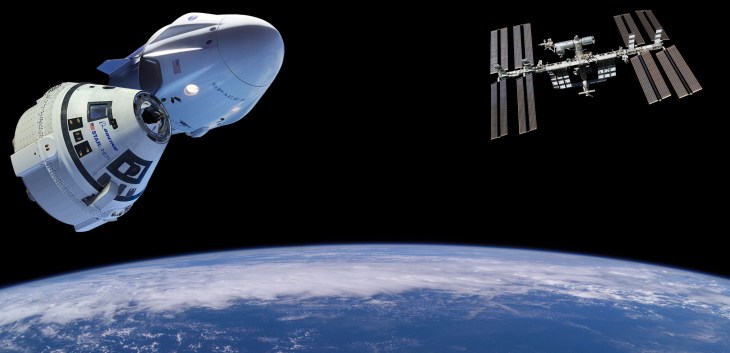One of the most important upcoming events in the space industry is undoubtedly the advent of SpaceX and Boeing’s competing crew-bearing capsules, which the companies have been working on for years. But today brings yet another delay for both programs, already years behind schedule.
Boeing’s Starliner and SpaceX’s Crew Dragon capsules will in the future be used to send astronauts to the International Space Station and conceivably other orbital platforms. As such, they are being engineered and tested with a rigor greatly exceeding that of ordinary cargo capsules.
It isn’t an easy task, though, and both companies have come a long way, but we’re well past the original estimated service debut of 2017. When it comes to shooting humans into space, of course, it’s done when it’s done, and not a day before.
This month was to be a major milestone for Crew Dragon, which was scheduled to make an uncrewed test trip to the ISS; Boeing planned to perform orbital tests soon as well, but both have been put off, according to NASA’s Commercial Crew blog:
The agency now is targeting March 2 for launch of SpaceX’s Crew Dragon on its uncrewed Demo-1 test flight. Boeing’s uncrewed Orbital Flight Test is targeted for launch no earlier than April.
These adjustments allow for completion of necessary hardware testing, data verification, remaining NASA and provider reviews, as well as training of flight controllers and mission managers.
In other words, they’re just plain not ready. Close, but for human spaceflight, close isn’t good enough.
The rest of 2019 will, if there are no serious delays, be filled with further milestones in the program. Here’s the tentative schedule:
- SpaceX Demo-1 (uncrewed): March 2, 2019
- Boeing Orbital Flight Test (uncrewed): NET April 2019
- Boeing Pad Abort Test: NET May 2019
- SpaceX In-Flight Abort Test: June 2019
- SpaceX Demo-2 (crewed): July 2019
- Boeing Crew Flight Test (crewed): NET August 2019
This summer, then, should be a momentous one for space travel. In the meantime, the only way to get people into orbit is the Russian Soyuz system, which has proven itself over and over but ultimately is both outdated and, well, Russian. A homegrown, 21st-century alternative is rapidly becoming a must-have.
